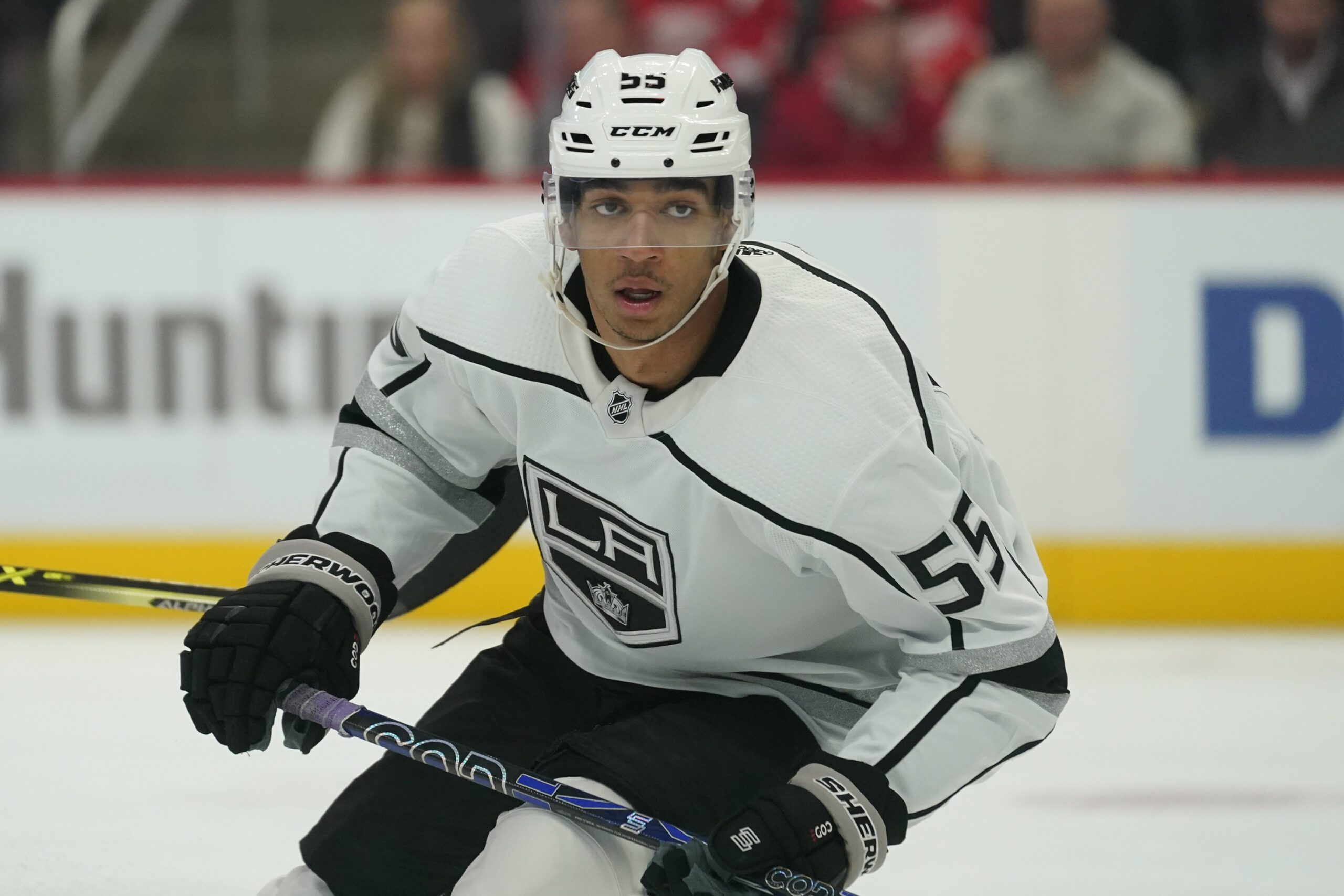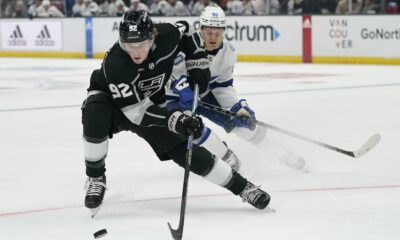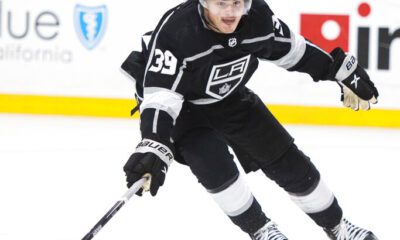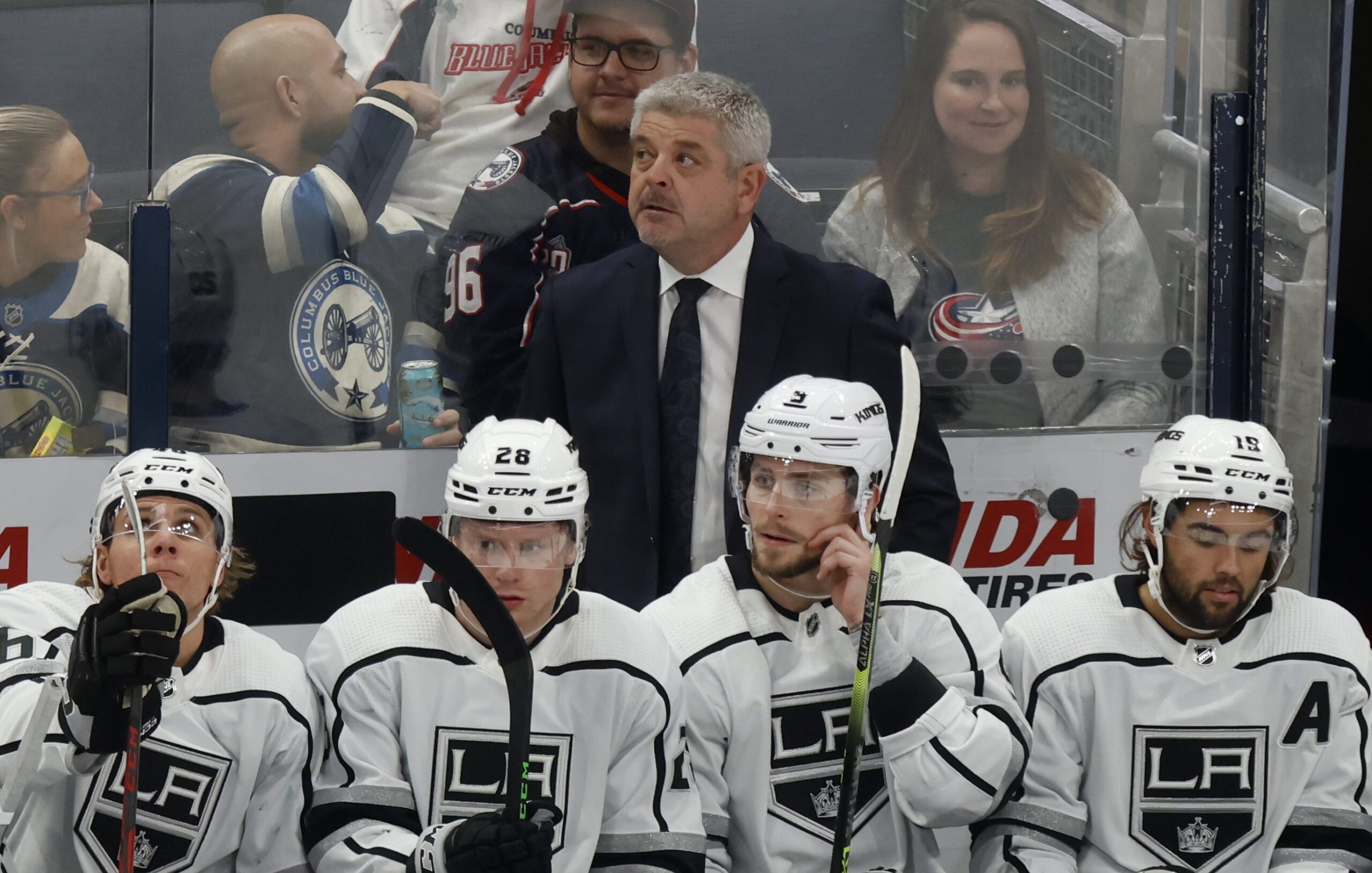LA Kings
Kings Prospects Wont Be Given Charity in the Lineup
Why it seems like players break out later in the Kings system and why young players seem to be “buried” down in the bottom six so often?

Joy turned to anger quickly for Los Angeles Kings fans yesterday.
Before morning skate it was announced that 2020 second-overall pick Quinton Byfield was re-called from the Ontario Reign, firing a shot of happiness into Kings fans. This quickly took a 180 after it was reported that Byfield was taking rushes with Brendan Lemieux and Rasmus Kupari on the fourth line.
Leading many fans to question the teams handling of Byfield's development.
While the anger yesterday surrounded Byfield in particular, this feels like a great opportunity to examine the King's development strategy overall. Why it seems like players break out later in the Kings system and why young players seem to be "buried" down in the bottom six so often?
The most obvious answer to, why are young players being buried in the bottom six? Is the competition within the Kings' lineup and where they're at as a team. The Kings expect to compete for a playoff spot and beyond and they have a roster that matches their ambition. Byfield isn't going to take minutes off Phil Danault, Anze Kopitar, and recently, Blake Lizotte.
The same is true for someone like Arthur Kaliyev, he's competing with Kevin Fiala, Adrian Kempe, Alex Iafallo, Trevor Moore and Viktor Arvidsson for a top-six spot. That isn't a battle many young players will win.
Because of this reality, I asked Todd McLellan about how the Kings' expectations affect player development. Is it more difficult for them to develop players compared to teams who're rebuilding and don't care much about their record? Allowing those teams to give young players significant ice time in the top six and on the power play.
"Yes and no, we like the position we're in," said McLellan "We'd much rather be in that situation. I think if you're a young player and you get charity up top, you don't always necessarily learn the right way. And if you're getting charity up top, you're probably not winning a lot of games and charity and losses is a disaster for development in my mind. Earning and winning is a real good thing. Where we were as an organization a little while ago, we had to have 20 players and some guys played because of the transition in the organization. They're likely no longer with us, for whatever reason, now Pep (Brendan Lemieux) is going to be coming back, Grunny (Carl Grundstrom) is a hell of a player, he's not in our lineup right now. Walks (Sean Walker) should be in there. There's competition and that can drive a team, we hope we have that."
The word that really sticks out there is "charity." And McLellan's philosophy that young players shouldn't be given charity explains a lot of the lineup decisions with said young players. It also explains why players seem to break out later than players in other organizations.
McLellan, and the Kings', system has always placed a heavy emphasis on defense and young players aren't trusted with a spot higher in the lineup until they can provide that defense. Very few players, and no young players, are given the freedom to give up good defense for their offensive ability.
According to Evolving-Hockey.com, the only forwards who are posting truly poor defensive numbers are Kevin Fiala and Carl Grundstrom. Grundstrom has been a regular healthy scratch recently and Fiala is the team's best offensive producer by a large margin.
There's a high defensive standard players have to uphold if they want to earn ice time in McLellan's system. And because defense is often the last thing to come for young players, it takes them longer to earn that ice time.
This is also why comparing King's prospects to players in other organizations doesn't do much. Going back to Byfield, the most common comparison is the player drafted one spot after him, Tim Stutzle. And yes, the start to Stutzle's career has been far superior to Byfield's without question. But, it's important to understand the context of their development.
The Senators have been a basement dweller for each of the last two seasons and are heading towards that again this season. Allowing them to give young players like Stutzle top-six minutes and significant power play time. Something Byfield hasn't gotten. Stutzle wouldn't be producing the way he does in Ottawa if the Kings drafted him.
That's just one example as well, there are plenty of others, like Lucas Raymond for the Detroit Red Wings.
It's frustrating watching high draft picks slowly develop and have to earn their stripes playing a role that wasn't expected of them on draft day. No one saw the Kings draft Byfield and thought, "I can't wait to see him play a fourth-line checking role," but that's what he has to do to earn more minutes. Or as McLellan puts it, "take minutes" away from other players.
Criticisms of prospects like Byfield and the development philosophy of McLellan and the Kings are more than fair. There is more than one way to develop young players. But when you see Byfield on the fourth line, Kaliyev in the bottom six or Jordan Spence not in the lineup, it's because they are not allowed charity higher in the lineup.
It's okay to disagree with these decisions, but there's a method to them outside of just burying young players. And the team has seen this philosophy work with players like Adrian Kempe, and it appears, Gabe Vilardi. Expectations for young players have to be adjusted in the Kings' current system. It's a word that gets thrown around a lot in Kings' circles, but patience really is key.





